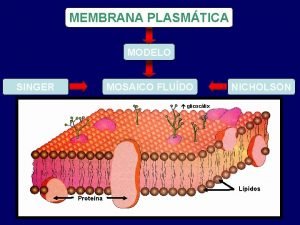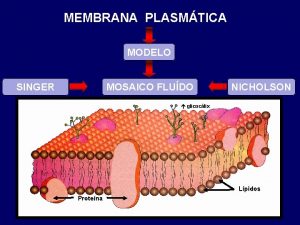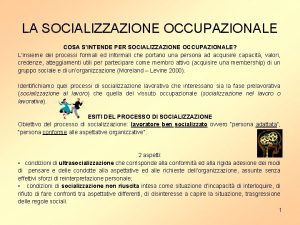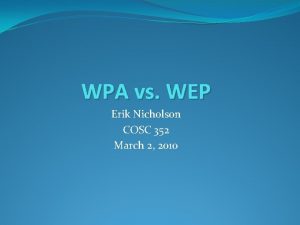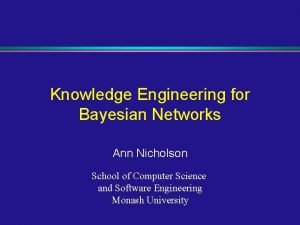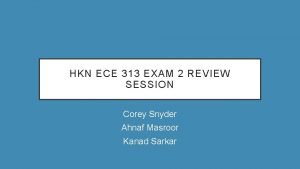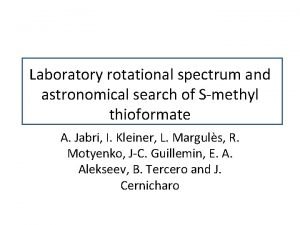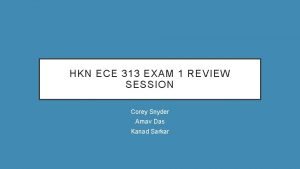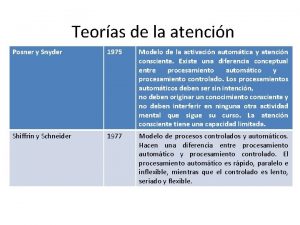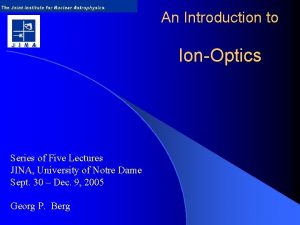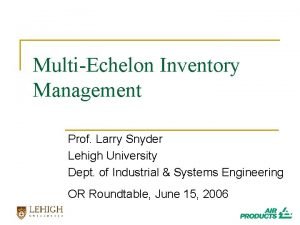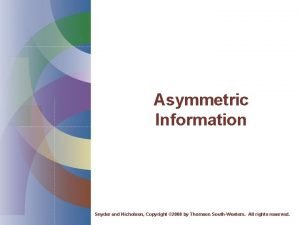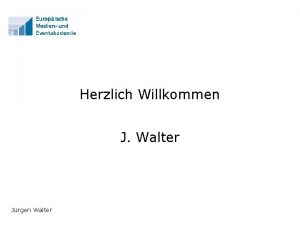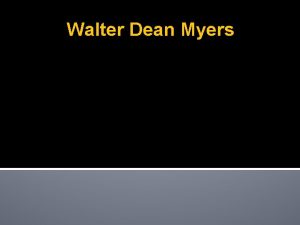Walter Nicholson Amherst College Christopher Snyder Dartmouth College








































- Slides: 40

Walter Nicholson Amherst College Christopher Snyder Dartmouth College Power. Point Slide Presentation | Philip Heap, James Madison University © 2015 Cengage Learning. All Rights Reserved. May not be scanned, copied or duplicated, or posted to a publicly accessible website, in whole or in part. 1

CHAPTER 6 Production © 2015 Cengage Learning. All Rights Reserved. May not be scanned, copied or duplicated, or posted to a publicly accessible website, in whole or in part. 2

Chapter Preview • We now want to turn to firm behavior, and answer three main questions. 1. What happens to output as a firm increases the number of input(s) it uses? 2. To what degree is a firm able to substitute one input for another? 3. What happens to production as a result of technological change? © 2015 Cengage Learning. All Rights Reserved. May not be scanned, copied or duplicated, or posted to a publicly accessible website, in whole or in part. Ch. 6 • 3

Production Functions • A firm is any organization that turns inputs into outputs. • A production function is a mathematical relationship between inputs and outputs. – q = f( K, L, M, . . . ) – q = f( K, L ) © 2015 Cengage Learning. All Rights Reserved. May not be scanned, copied or duplicated, or posted to a publicly accessible website, in whole or in part. Ch. 6 • 4

Marginal Product • Marginal product: – The additional output that can be produced by adding one more unit of some input, holding all other inputs constant. • What happens to output as we add one more unit of one input (labor) to a fixed amount of another input (capital). © 2015 Cengage Learning. All Rights Reserved. May not be scanned, copied or duplicated, or posted to a publicly accessible website, in whole or in part. Ch. 6 • 5

Total Product and Marginal Product Output per week As labor increases output increases but at a diminishing rate. So marginal product decreases as labor increases. MPL L* Labor input per week © 2015 Cengage Learning. All Rights Reserved. May not be scanned, copied or duplicated, or posted to a publicly accessible website, in whole or in part. L* Labor input per week Ch. 6 • 6

Average Product • Average product is equal to total output divided by the number of workers. • Average product tells you how productive all your workers are on average. It does not tell you how productive an extra worker is. • Practical difficulty in applying the marginal product concept. © 2015 Cengage Learning. All Rights Reserved. May not be scanned, copied or duplicated, or posted to a publicly accessible website, in whole or in part. Ch. 6 • 7

Isoquant Maps • How can a firm combine different amounts of capital and labor to produce output? • Isoquant: – A curve that shows the various combinations of inputs that will produce the same (a particular) amount of output. – How does this compare to an indifference curve? • Isoquant map is a contour map of a firm’s production function. © 2015 Cengage Learning. All Rights Reserved. May not be scanned, copied or duplicated, or posted to a publicly accessible website, in whole or in part. Ch. 6 • 8

Isoquant Map Capital per week KA A q=30 q=20 KB B LA q = 10 LB Labor per week © 2015 Cengage Learning. All Rights Reserved. May not be scanned, copied or duplicated, or posted to a publicly accessible website, in whole or in part. Ch. 6 • 9

Rate of Technical Substitution • Marginal rate of technical substitution (RTS): – The amount by which one input can be reduced when one more unit of another input is added while holding output constant. • If you used one more worker how much less capital could you use and still produce the same level of output. • RTS = - slope of the isoquant • RTS = - (change in capital) / (change in labor) © 2015 Cengage Learning. All Rights Reserved. May not be scanned, copied or duplicated, or posted to a publicly accessible website, in whole or in part. Ch. 6 • 10

Rate of Technical Substitution At point A, the slope of the isoquant = RTS = ΔKA/ ΔL Capital per week KA Along the isoquant. the slope gets flatter and the RTS diminishes At point B, the slope of the isoquant = RTS = ΔKB/ ΔL A The amount of capital that can be given up when one more unit of labor is employed gets smaller and smaller ΔKA ΔL KB ΔKBB LA ΔL LB q = 10 Labor per week © 2015 Cengage Learning. All Rights Reserved. May not be scanned, copied or duplicated, or posted to a publicly accessible website, in whole or in part. Ch. 6 • 11

The RTS and Marginal Product • Why must the slope of the isoquant be negative or the RTS positive? – RTS = MPL/MPK – If RTS was < 0 either MPL or the MPK would also have to be < 0. – But then a firm would be paying for an input that reduced output. – Since no firm would do that MP’s > 0 and the RTS > 0. © 2015 Cengage Learning. All Rights Reserved. May not be scanned, copied or duplicated, or posted to a publicly accessible website, in whole or in part. Ch. 6 • 12

The RTS and Marginal Product • Why does the slope of the isoquant get flatter or why does the RTS diminish? – The less (more) labor is used relative to capital, the more (less) able labor is able to replace capital in production. – As the firm uses more and more labor, the MPL falls. – Therefore, to maintain the same level of output, the firm would only be able to give up smaller and smaller amounts of capital. © 2015 Cengage Learning. All Rights Reserved. May not be scanned, copied or duplicated, or posted to a publicly accessible website, in whole or in part. Ch. 6 • 13

Returns to Scale • What would happen to production if a firm increased the number of all inputs? • Returns to scale: – The rate at which output increases in response to a proportional increases in all inputs. • Two opposing effects at work as scale increases: – Greater division of labor (specialization). – Managerial inefficiencies and coordination problems © 2015 Cengage Learning. All Rights Reserved. May not be scanned, copied or duplicated, or posted to a publicly accessible website, in whole or in part. Ch. 6 • 14

Returns to Scale • Constant returns to scale: – If inputs increase by a factor of X, output increases by a factor equal to X. © 2015 Cengage Learning. All Rights Reserved. May not be scanned, copied or duplicated, or posted to a publicly accessible website, in whole or in part. Ch. 6 • 15

Constant Returns to Scale Capital per week Output increases at the same proportion as inputs 4 q=40 3 q=30 2 q=20 1 q = 10 1 2 3 4 Labor per week © 2015 Cengage Learning. All Rights Reserved. May not be scanned, copied or duplicated, or posted to a publicly accessible website, in whole or in part. Ch. 6 • 16

Returns to Scale • Constant returns to scale – If inputs increase by a factor of X, output increases by a factor equal to X. • Increasing returns to scale – If inputs increase by a factor of X, output increases by a factor greater than X. © 2015 Cengage Learning. All Rights Reserved. May not be scanned, copied or duplicated, or posted to a publicly accessible website, in whole or in part. Ch. 6 • 17

Increasing Returns to Scale Capital per week Output increases at a rate greater than the increase in inputs 4 3 q=40 2 Or to increase output by some factor X, inputs would only need to increase by a factor less than X. q=30 1 q=20 q = 10 1 2 3 4 Labor per week © 2015 Cengage Learning. All Rights Reserved. May not be scanned, copied or duplicated, or posted to a publicly accessible website, in whole or in part. Ch. 6 • 18

Returns to Scale • Constant returns to scale – If inputs increase by a factor of X, output increases by a factor equal to X. • Increasing returns to scale – If inputs increase by a factor of X, output increases by a factor greater than X. • Decreasing returns to scale – If inputs increase by a factor of X, output increases by a factor less than X. © 2015 Cengage Learning. All Rights Reserved. May not be scanned, copied or duplicated, or posted to a publicly accessible website, in whole or in part. Ch. 6 • 19

Decreasing Returns to Scale Capital per week Output increases at a rate less than the increase in inputs 4 q=30 3 2 q=20 1 q = 10 1 2 3 4 Labor per week © 2015 Cengage Learning. All Rights Reserved. May not be scanned, copied or duplicated, or posted to a publicly accessible website, in whole or in part. Ch. 6 • 20

Input Substitution • How is the shape of the isoquant related to how easy it is to substitute one input for another? • Fixed proportions production function: – A production function in which the inputs must be used in a fixed ratio to one another. – Mowing a lawn: one worker and one lawnmower. – There is no way to substitute one input for another. © 2015 Cengage Learning. All Rights Reserved. May not be scanned, copied or duplicated, or posted to a publicly accessible website, in whole or in part. Ch. 6 • 21

Fixed Proportions Production If you only have K 0 machines would only need L 0 workers to produce q 0. Capital per week If you used L 1 workers your output would remain the same. K 1 q 1 K 0 q 0 L 1 Labor per week © 2015 Cengage Learning. All Rights Reserved. May not be scanned, copied or duplicated, or posted to a publicly accessible website, in whole or in part. Ch. 6 • 22

Input Substitution • Why does the degree to which a firm can substitute one input for another matter? – Suppose the price of one of the firm’s inputs increases. – The firm will want to use less of the relatively more expensive input and more of the relatively less expensive input. – A firm that is able to substitute one input for another will be able to keep its costs from rising as much. © 2015 Cengage Learning. All Rights Reserved. May not be scanned, copied or duplicated, or posted to a publicly accessible website, in whole or in part. Ch. 6 • 23

Changes in Technology • A production function or isoquant reflects a firm’s current technological knowledge. • What happens to the production function if there is technological progress? • Technical progress: – a shift in the production function that allows a given output level to be produced using fewer inputs. © 2015 Cengage Learning. All Rights Reserved. May not be scanned, copied or duplicated, or posted to a publicly accessible website, in whole or in part. Ch. 6 • 24

Changes in Technology Capital per week q 0 ’ Labor per week © 2015 Cengage Learning. All Rights Reserved. May not be scanned, copied or duplicated, or posted to a publicly accessible website, in whole or in part. Ch. 6 • 25

Changes in Technology vs. Input Substitution Capital per week With technological change the firm can produce the same level of output, q 0, with K 0 but less labor. K 0 q 0 ’ L 1 L 0 Labor per week © 2015 Cengage Learning. All Rights Reserved. May not be scanned, copied or duplicated, or posted to a publicly accessible website, in whole or in part. Ch. 6 • 26

Changes in Technology vs. Input Substitution Capital per week With input substitution the firm would need to use K 1 units of capital with L 1 units of labor. K 1 K 0 q 0 ’ L 1 L 0 Labor per week © 2015 Cengage Learning. All Rights Reserved. May not be scanned, copied or duplicated, or posted to a publicly accessible website, in whole or in part. Ch. 6 • 27

A Numerical Production Example • Production of burgers at Hamburger Heaven – Hamburgers per hour: q = 10 x (KL) ½ – There are constant returns to scale. • K, L = 1, q = 10 • K, L = 2, q = 20 © 2015 Cengage Learning. All Rights Reserved. May not be scanned, copied or duplicated, or posted to a publicly accessible website, in whole or in part. Ch. 6 • 28

Constant Returns at Hamburger Heaven Grills Workers Hamburgers 1 1 10 2 2 20 3 3 30 4 4 40 5 5 50 6 6 60 7 7 70 8 8 80 9 9 90 10 10 100 © 2015 Cengage Learning. All Rights Reserved. May not be scanned, copied or duplicated, or posted to a publicly accessible website, in whole or in part. Ch. 6 • 29

Average and Marginal Product at Hamburger Heaven • Suppose that Hamburger Heaven uses 4 units of capital – q = 10(KL) ½ – q = 10(4 L) ½ – q = 20 L ½ © 2015 Cengage Learning. All Rights Reserved. May not be scanned, copied or duplicated, or posted to a publicly accessible website, in whole or in part. Ch. 6 • 30

Q, AP and MP at Hamburger Heaven q = 10 x (4 x 2)1/2 = 28. 3 APL = 28. 3/2 = 14. 1 MPL = 28. 3 - 20 = 8. 3 © 2015 Cengage Learning. All Rights Reserved. May not be scanned, copied or duplicated, or posted to a publicly accessible website, in whole or in part. Ch. 6 • 31

Isoquant for Hamburger Heaven • Suppose Hamburger Heaven wants to make 40 burgers. – q = 40 = 10(KL) ½ – 4 = (KL) ½ – 16 = KL – So if K = 2 and L = 8, q = 40 © 2015 Cengage Learning. All Rights Reserved. May not be scanned, copied or duplicated, or posted to a publicly accessible website, in whole or in part. Ch. 6 • 32

Isoquant for Hamburger Heaven © 2015 Cengage Learning. All Rights Reserved. May not be scanned, copied or duplicated, or posted to a publicly accessible website, in whole or in part. Ch. 6 • 33

Isoquant for Hamburger Heaven Grills 8 2 q = 40 2 8 Workers © 2015 Cengage Learning. All Rights Reserved. May not be scanned, copied or duplicated, or posted to a publicly accessible website, in whole or in part. Ch. 6 • 34

RTS at Hamburger Heaven RTS = - change in K / change in L = -(4 -5. 3)/(4 -3) = 1. 3 RTS = - change in K / change in L = -(1. 8 -2)/(9 -8) = 0. 2 © 2015 Cengage Learning. All Rights Reserved. May not be scanned, copied or duplicated, or posted to a publicly accessible website, in whole or in part. Ch. 6 • 35

RTS at Hamburger Heaven • As HH uses more and more workers, the RTS falls. – From L =3 to L =4, RTS = 1. 3 – From L = 8 to L = 9, RTS = 0. 2 • As more and more workers are used, the firm is less able to reduce the number of grills it uses. © 2015 Cengage Learning. All Rights Reserved. May not be scanned, copied or duplicated, or posted to a publicly accessible website, in whole or in part. Ch. 6 • 36

Technological Progress at Hamburger Heaven • Suppose that due to genetic engineering hamburgers can flip themselves. • Old production function: q = 10(KL) ½ • New production function: q = 20(KL) ½ • If HH still wants to make 40 burgers – 40 = 20(KL) ½ – 4 = KL – With old technology: 16 = KL © 2015 Cengage Learning. All Rights Reserved. May not be scanned, copied or duplicated, or posted to a publicly accessible website, in whole or in part. Ch. 6 • 37

Technological Progress at Hamburger Heaven Grills With the old technology: 16 = KL With the new technology: 4 = KL 4 q = 40 1 4 q = 40 Workers © 2015 Cengage Learning. All Rights Reserved. May not be scanned, copied or duplicated, or posted to a publicly accessible website, in whole or in part. Ch. 6 • 38

Summar y • A production function, q = (K, L) shows the relationship between output and inputs. • Marginal product is the additional output that can be produced by adding one more unit of some input, holding all other inputs constant. • An isoquant shows the possible input combinations that a firm can use to produce a given level of output. • The absolute value of the isoquant’s slope is the RTS – the rate at which one input can be substituted for another. © 2015 Cengage Learning. All Rights Reserved. May not be scanned, copied or duplicated, or posted to a publicly accessible website, in whole or in part. Ch. 6 • 39

Summar y • The RTS falls as the firm uses more and more of one input. • Production may exhibit constant, decreasing, or increasing returns to scale. • With fixed proportions production a firm will not be able to substitute one input for another. • With technological progress a firm can produce a given level of output with fewer inputs: the isoquant shifts in. © 2015 Cengage Learning. All Rights Reserved. May not be scanned, copied or duplicated, or posted to a publicly accessible website, in whole or in part. Ch. 6 • 40
 Christopher snyder dartmouth
Christopher snyder dartmouth Chris snyder dartmouth
Chris snyder dartmouth Direct and reported speech worksheet
Direct and reported speech worksheet Umass amherst ssn
Umass amherst ssn Amherst college
Amherst college Mount holyoke founded
Mount holyoke founded Margaretta nicholson
Margaretta nicholson Digital footprint impact
Digital footprint impact James nicholson trafigura
James nicholson trafigura Pamela dennett contact info
Pamela dennett contact info Glicoclix
Glicoclix Annemarie nicholson
Annemarie nicholson Florida hospital nicholson center
Florida hospital nicholson center Nicholson recycling
Nicholson recycling Hipertonico
Hipertonico Jan nicholson
Jan nicholson William nicholson md
William nicholson md головной мозг
головной мозг Socializzazione lavorativa
Socializzazione lavorativa Matts nicholson
Matts nicholson Erik nicholson
Erik nicholson Nicholson school of communication
Nicholson school of communication Ann nicholson
Ann nicholson Sarah snyder mega
Sarah snyder mega Uiuc ece 313
Uiuc ece 313 Snyder radar
Snyder radar Paul snyder killer
Paul snyder killer Thomas snyder mental health
Thomas snyder mental health Ch3scho
Ch3scho Hkn uiuc
Hkn uiuc Modelo de posner y snyder
Modelo de posner y snyder Snyder printer
Snyder printer Ionoptics
Ionoptics Larry snyder lehigh
Larry snyder lehigh Planned parenthood is done margaret sanger
Planned parenthood is done margaret sanger Ece 313
Ece 313 Chard-snyder fsa
Chard-snyder fsa Marlene snyder
Marlene snyder Caci asthma worksheet
Caci asthma worksheet Gary snyder love poem
Gary snyder love poem Snyder introduction to the california condor download
Snyder introduction to the california condor download










